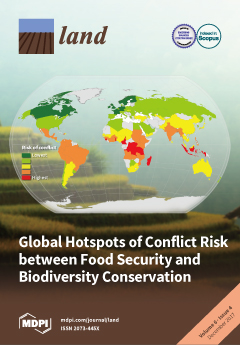Resource information
Remote sensing-based assessments of large river basins such as the Krishna, which supplies water to many states in India, are useful for operationally monitoring agriculture, especially basins that are affected by abiotic stress. Moderate-Resolution Imaging Spectroradiometer (MODIS) time series products can be used to understand cropland changes at the basin level due to abiotic stresses, especially water scarcity. Spectral matching techniques were used to identify land use/land cover (LULC) areas for two crop years: 2013–2014, which was a normal year, and 2015–2016, which was a water stress year. Water stress-affected crop areas were categorized into three classes—severe, moderate and mild—based on the normalized difference vegetation index (NDVI) and intensity of damage assessed through field sampling. Furthermore, ground survey data were used to assess the accuracy of MODIS-derived classification individual products. Water inflows into and outflows from the Krishna river basin during the study period were used as direct indicators of water scarcity/availability in the Krishna Basin. Furthermore, ground survey data were used to assess the accuracy of MODIS-derived LULC classification of individual year products. Rainfall data from the tropical rainfall monitoring mission (TRMM) was used to support the water stress analysis. The nine LULC classes derived using the MODIS temporal imagery provided overall accuracies of 82% for the cropping year 2013–2014 and 85% for the year 2015–2016. Kappa values are 0.78 for 2013–2014 and 0.82 for 2015–2016. MODIS-derived cropland areas were compared with national statistics for the cropping year 2013–2014 with a R2 value of 0.87. Results show that both rainfed and irrigated areas in 2015–2016 saw significant changes that will have significant impacts on food security. It has been also observed that the farmers in the basin tend to use lower inputs and labour per ha during drought years. Among all, access to water is the major driver determining the crop choice and extent of input-use in the basin.


